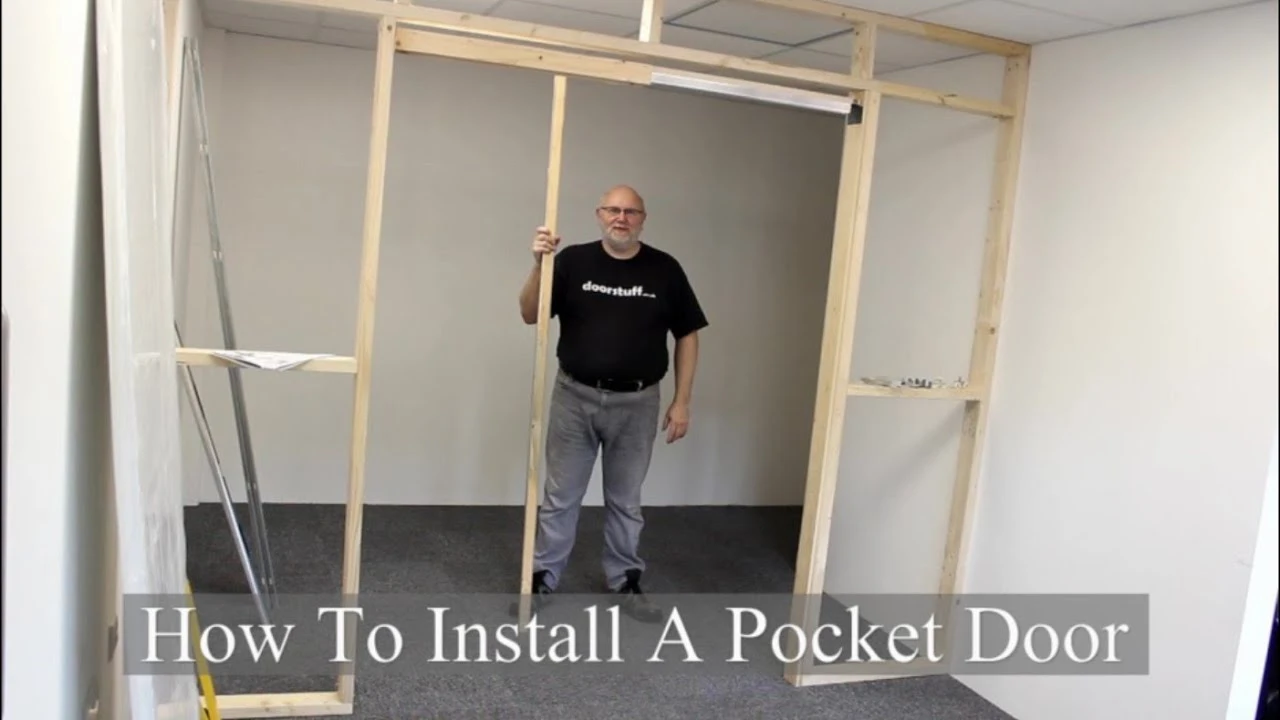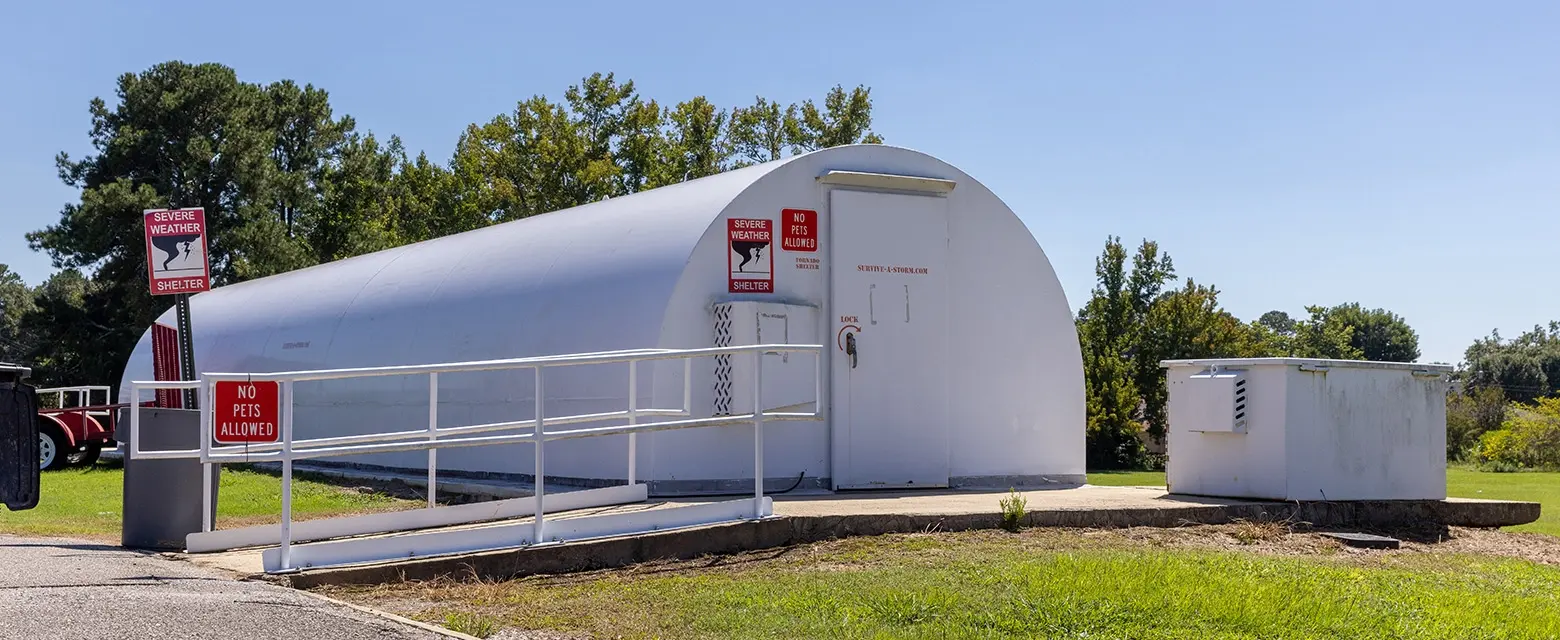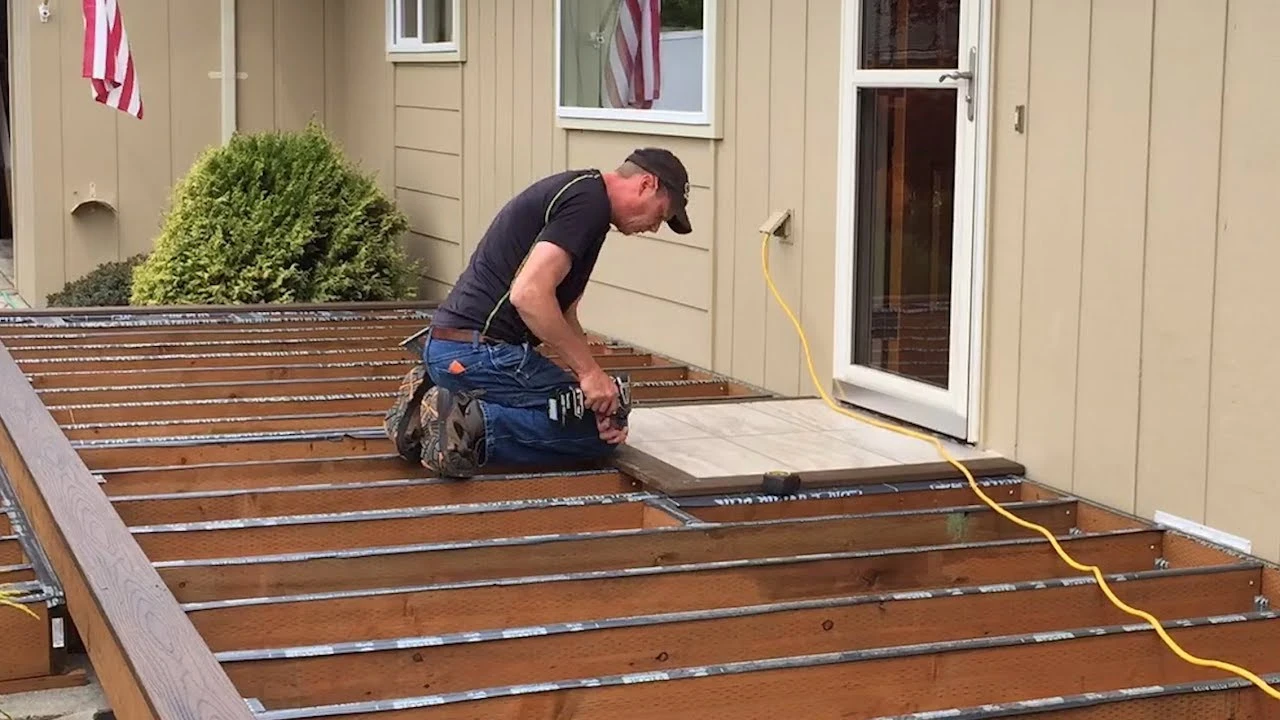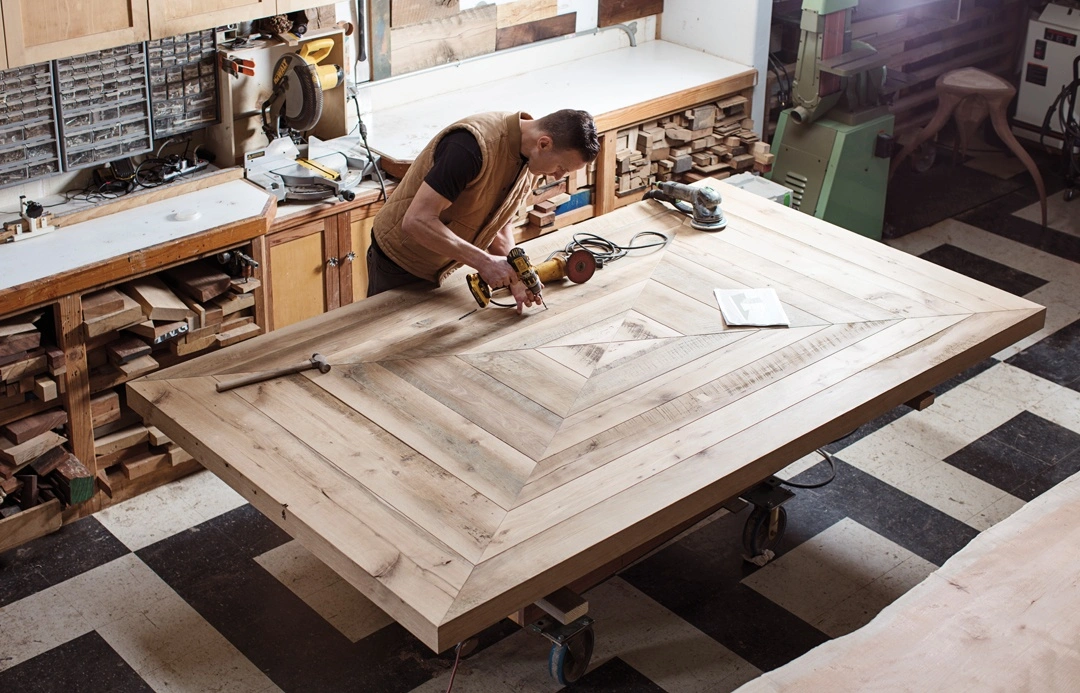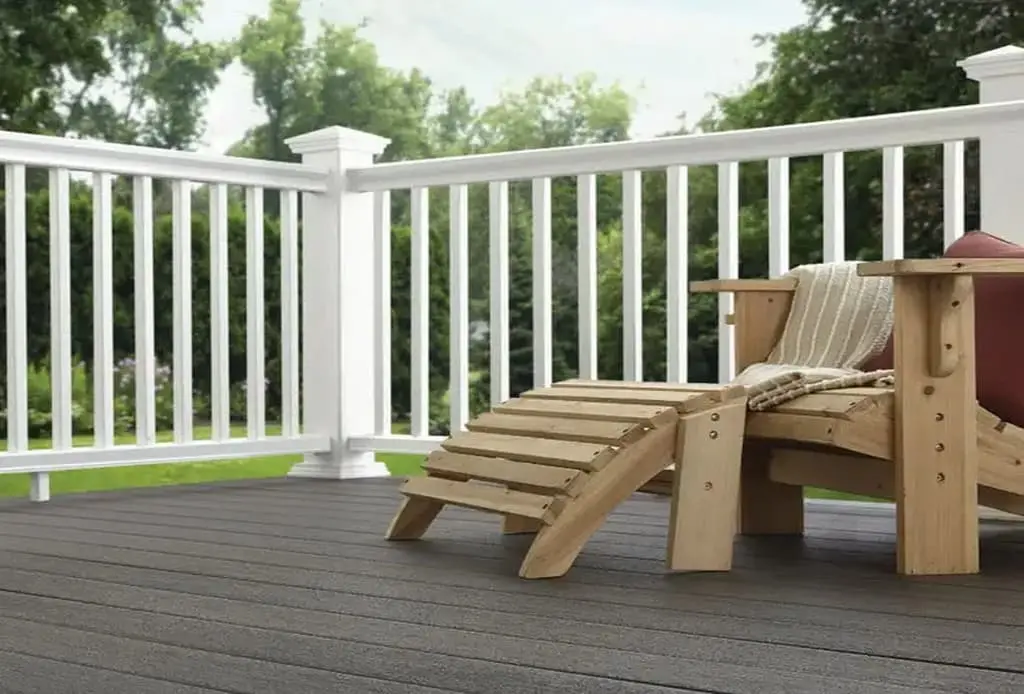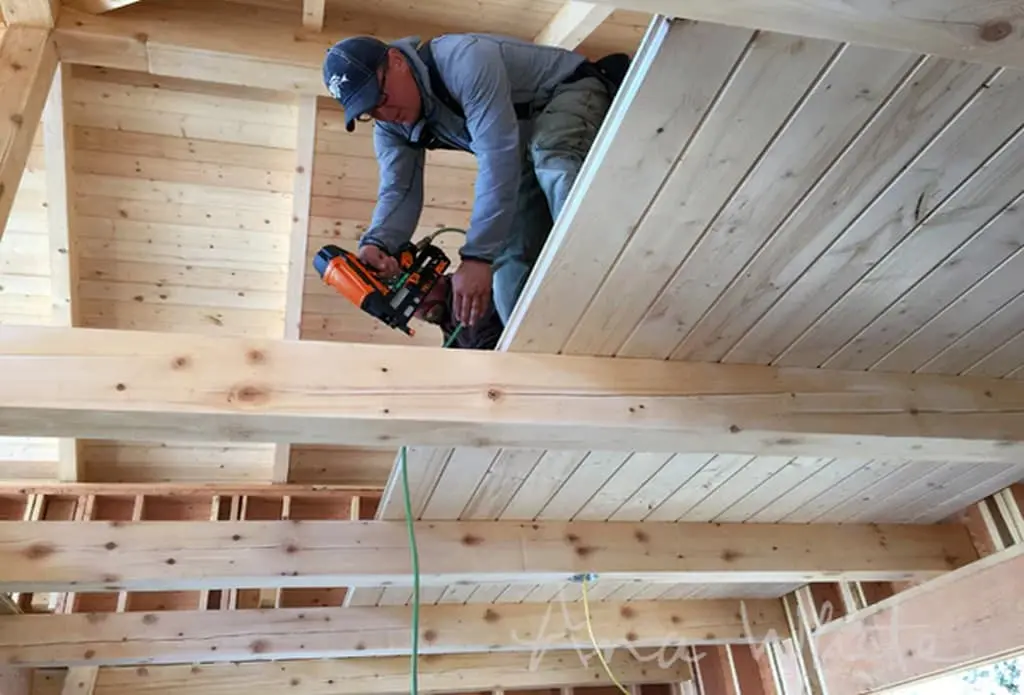Composite decking is not like traditional wood decking. On the contrary, it involves PVC and recycled polythene material. Composite decks typically cost more to construct compared to traditional ones. However, there are certain benefits associated with this increasing price.
Unlike wood, composite materials do not rot or splinter. Moreover, these decks do not need much maintenance. Semi-annual cleaning of the structure works just fine for them. That’s why they are a much better option than pressure-treated wood decks.
The biggest perk of building a composite deck is its longevity. They can last from 30-50 years and also come in a variety of colors and finishes. If you want to go for composite decking in your next project, it is necessary to assess how much it costs in 2025. This blog is your ultimate guide to analyzing all of the hidden costs and obvious expenses associated with composite decking.
Types Of Composite Decking and Their Cost In 2025
It is essential to define the term “composite decking” before calculating the actual cost. According to the American Chemical Society, this type of decking is made up of sawdust, wood chips, and plastic (High-Density Polyethylene – HDPE). Based on the material used, composite decking is classified into 3 different types. Let’s get a brief overview of each and a sneak peek at their actual cost!
Vinyl Decking:
This type of decking is commonly known as PVC decking. Instead of a wood and plastic mixture, only PVC components are used in it. That’s why it is less expensive compared to wood-plastic composite decking. It starts from $5 and goes all the way up to $15 per square foot. Due to all-plastic inclusive manufacturing, it has increased longevity. However, PVC panels are more susceptible to contracting and expanding in changing weather.
Poly Decking:
Another name for this type is polypropylene or mineral-based decking. The white composite deck boards created in this type have special anti-slipping attributes. That’s why they are used excessively in docks. Moreover, they are UV-resistant and come in different sizes and shapes. For instance, slotted boards are the latest addition to polyethylene decking. These can snap together seamlessly and save installation costs. Its average cost is $6 to $15 per square foot.
Wood-Plastic Composite Decking:
As the name suggests, this type involves boards that are made with wood fibre and plastic components. You might see composite decking listed at around $10 to $20 per square foot. Sure, that’s on the pricey side compared to some other composite options. But here’s the thing: if you’re aiming for durability and low upkeep, it’s a serious contender. These boards shrug off water, last for years, and you won’t be staining or sealing them constantly. And honestly, they look a lot like real wood, giving a polished, natural finish to your backyard.
Real‑World Costs for Composite Decking in 2025
Composite decks tend to carry a higher price upfront. However, their value often shines in the long run. Here’s a detailed look at what really influences cost in 2025:
Material and Installed Cost Overview
Cost of composite deck boards ranges between $16 and $32 per square foot. Its cost depends on whether you select basic capped composite or high-performance PVC/polymers. The total costs usually land between $40 and $80 per square foot. Remember, this total cost is calculated after factoring in the installation.
If you don’t know how wide are composite boards, let us spill the secret. A typical board is 5.5 to 6 inches in width. That means, for a medium-sized deck (around 200 sq ft), the average investment hovers near $8,500. This includes boards, fasteners, joist supports, railings, and labor. Larger or elevated designs naturally push the price up. So, sometimes, it can approach $18,000 or even more.
Cost Examples by Deck Size
| Deck Size | Installed Cost Range |
| 100 sq ft | $4,000–$7,000 |
| 200 sq ft | $8,000–$16,000 |
| 300 sq ft | $12,000–$24,000 |
| 400 sq ft | $16,000–$32,000 |
Comparing Composite Types
| Composite Style | Material Cost (sq. ft.) |
| Entry capped composite | $16–$22 |
| High-performance composite | $22–$32 |
| Basic wood-plastic mix | $10–$15 |
Higher-cost composite styles tend to offer enhanced fade resistance. Moreover, they have increased slip resistance and multi-layer surface finishes that resist staining and UV damage.
Installation and Design Impact
Labor typically ranges from $24 to $48 per square foot. The following factors influence it:
- Multi-story or elevated decks
- Custom-shaped designs
- Staircases
- Integrated lighting
- Under-deck ceilings
These extras can push labor costs to the upper end or beyond.
Other cost contributors include:
- Site preparation and foundation work, which, depending on local regulations, may run $500–$1,500.
- Permit fees in many regions.
- Accessory add-ons. These include fascia boards, hidden fastener systems, or deck lighting ($2–10 per square foot).
Additional Costs Associated With Composite Decking
A new composite deck looks straightforward. But costs can stack up fast if you ignore extras. Here’s a breakdown of the hidden line items that often surprise homeowners:
Structural Subframe and Footings
Composite boards sit on joists and beams. Those supporting frames often use pressure-treated lumber or even steel. Installing concrete footings or piers can add $2 to $5 per square foot. Unusual soil, raised decks, or frost-depth footings can drive the cost even higher.
Railing Systems and Balusters
Railings are not optional on elevated decks and can cost $15 to $120 per linear foot, based on materials and style. Choose composite post caps, satin-grade plastic rails, or metal balusters. That cost can easily add thousands when you have multiple long edges or stair access.
Stairs and Built-Ins
Converting a single-level platform into a welcoming set of stairs adds to labor and materials. Each step often costs $200 to $400, depending on board sizes and rail support. Built-in benches or planters escalate costs further. You can expect $75–$200 per linear foot or bench.
Hidden Fasteners and Specialty Hardware
The process also needs decking parts for ideal results. These include hidden clips or screws designed to expand and contract. Specialty fastener prices vary, but typically add $1 to $3 per square foot. If you want color-matched screws or concealed fastening systems, the cost further increases.
Also Read: Labor Cost to Build a Deck Per Square Foot in 2025
Lighting, Electric, and Accessories
Want integrated lighting under rails or posts? That’s more than decoration. It’s rewiring and fixtures.
- Standard deck light fixtures: $10–$30 each
- LED strips: $30–$150 each
When you detail every post or stair, they add up quickly.
Permit Fees and Local Compliance
Construction permits or footings are required to create decks in some US states. The ideal cost varies across regions. On average, getting a permit costs from $100 to $500. However, special design reviews and homeowner association charges can make this number even bigger.
Delivery, Waste, and Site Prep
Composite boards are heavy and inflexible, which makes delivery a necessity for contractors. Delivery charges average $150–$300. Many contractors add a disposal or waste handling fee as well. If your yard is tight or slopes downhill, expect prep or demolition work to cost $500–$2,000.
Maintenance Accessories and Expansion Adjustments
While maintenance is low, many homeowners still buy inspection kits. Moreover, some consider purchasing cleaning solutions, or oil-resistant pointing for expansion gaps. Those accessories generally run $0.10–$0.50 per square foot.
Here’s a more complete snapshot of the collective costs:
| Hidden Cost Category | Typical Range (per sq ft or unit) |
| Substructure & footings | $2 to $5 / sq.ft |
| Railing systems | $15 to $120 / linear foot |
| Stairs | $200 to $400 / step |
| Built-in benches or storage | $75 to $200 / linear foot |
| Hidden fasteners | $1 to $3 / sq.ft |
| Lighting fixtures & wiring | $10–30 / light; $30–150 / high-end fixture |
| Permit and compliance fees | $100 to $500 / deck |
| Delivery and waste management | $150 to $300 delivery + $500–2,000 site prep |
| Maintenance accessories | $0.10–$0.50 / sq.ft |
Perks of Using Composite Decking
Building a composite deck is not just about getting a smooth surface. On the contrary, it is a wise decision to skip the staining and maintenance routine associated with traditional wood decking. Moreover, the composite deck lasts longer and doesn’t rot or splinter in adverse weather conditions. There are tons of perks associated with composite decking. Let’s go through some of them individually:
- They do not rot or splinter but stay standing for years. Many systems come with 25‑ to 30‑year warranties, whereas the real-world installations often stay solid for 30 to 50 years.
- They don’t need sanding, sealing, painting, or yearly stains.
- Composite boards resist water damage. Moreover, they don’t absorb mold spores, which is why these decks won’t warp or crack from moisture exposure.
- Insects do not damage it, so you won’t have to worry about termite infestation. They also shrug off fungal decay without chemical treatments or preservatives.
- Composite boards stay cooler than wood. Also, the special UV-protective composite boards reflect heat instead of absorbing it. That leads to cooler underfoot, even in direct sun. It is the safest option for bare feet and pets.
- Integrated pigments and UV barriers help boards retain their color. They preserve at least 95% of their original hue over the years of exposure.
- These are available in dozens of color styles and textures. Some of them are grey oak grain, spiced walnut streaks, and tropical bamboo tones
- Composite boards reduce landfill waste and deforestation.
- These decks are built for safety with textured slip-resistant surfaces. They have tactile grooves and board embossing, which makes them perfect around pool areas.
- Hidden fastener systems allow clean installations.
A Step-By-Step Plan To Calculate The Cost Of Composite Decking For Your Site
We have already highlighted all the necessary costs associated with typical composite decks. However, if you want specific cost estimation of your own composite decking, you can follow our step-by-step plan. This streamlined strategy is all you need to find the extremely precise cost for building composite decks.
Step 1: Measure Your Deck Design Carefully
First, measure your deck area in feet and add curved edges and multi-levels in total square footage. For instance, a 12 × 12 ft rectangle is 144 sq ft. Try adding stair landings or attached planters separately.
Step 2: Choose Your Composite Style
Composite boards now fall into three rough pricing tiers:
- Budget capped composite: around $16–22 per sq ft
- Mid-grade polymer composite: $22–28 per sq ft
- Heavy-duty PVC or mineral-based boards: $28–32+ per sq ft
Use the cost of composite deck boards to estimate total surface expense. For a 200 sq ft deck using mid-grade boards, you’d expect $4,400–$5,600 just for decking. Include fasteners that typically run $1–$3 per sq ft, especially if using hidden clip systems.
Step 3: Add in Substructure & Framing
Composite decks sit on joists and beams, made using concrete or steel. The framing and foundations generally add $10–20 per sq ft. That’s an extra $2,000–4,000 if you are working on a deck on an area of 200 square feet. Deck height impacts cost significantly. Elevated decks need deep footers and cost more than ground-level builds.
Step 4: Estimate Labor Costs with Real Data
Industry averages suggest composite installation runs $24–48 per sq ft, depending on complexity and region. Simpler ground-level decks trend toward the low end; elevated decks with stairs lean higher. So for our example:
| Type | Per Square Foot Labor | For A 200 Sq Ft Deck |
| Decking | $22 | $4400 |
| Fasteners | $2 | $400 |
| Framing | $15 | $3000 |
| General Labor | $30 | $6000 |
Grand total: roughly $13,800 for a medium-complexity, 200 sq ft composite deck.
Step 5: Include Extra Features Thoughtfully
Consider these enhancements and their typical costs:
| Feature | Cost |
| Railings | $20–60 per linear foot |
| Stairs | $160–560 per set of 8–16 steps |
| Benches | $75–200 per linear foot |
| Stair lighting | $20–150 per fixture |
Step 6: Factor in Permits and Preparation
Some permits cost as little as $50. At the same time, others run up to $500. All of the costs depend on your regional municipality’s rules. Site prep or excavation can add another $500 to $1,500.
Also Read: What is Whitewood board? Types, Advantages, and Uses
Step 7: Add Contingency and Waste Margins
There are multiple contingency costs associated with composite decks. For instance, an update in the framework can add $300–700. The best way to handle it is through contingency and waste management funds. Try regulating the project with 5–10% material waste. Also, use a small buffer for design tweaks or unforeseen site conditions.
Example Summary for a 200 sq ft Composite Deck
| Component | Estimated Cost |
| Composite boards | $4,400–$5,600 |
| Hidden fasteners | $400–$600 |
| Substructure & framing | $2,000–$4,000 |
| Labor | $4,800–$9,600 |
| Railings (60 ft) | $1,200–$3,600 |
| Stairs (10 steps) | $160–$400 |
| Lighting & extras | $200–$1,000 |
| Permit and site prep | $700–$1,800 |
| Material waste allowance | $300–$800 |
| Total Estimated Range | $12,460–$25,800 |
Why This Method Works Like a Charm
Taking these steps ensures that surprise costs or misestimating board quantities do not blindside you. The process anchors your budget to real market data:
- Shape and size conversions give you the correct board count
- Quality tier choice defines whether material lands at $16 or $32 per sq ft
- Labor numbers tied to deck elevation, curves, and installation details
Tips To Save Money During Deck Installation
Wrongly assessed composite deck cost can cause budget overruns and delays. Luckily, a few smart choices can help you eliminate those and maintain quality simultaneously.
Choose a Simple Deck Shape
Stick to square or rectangular designs. Avoid curves and angles because these need more cuts, custom framing, and skilled labor. Simple shapes mean fewer hours and less waste, saving both material and installation costs.
Build in the Off-Season
Schedule construction in late fall or winter when demand is low. Contractors offer better rates, and suppliers run clearance sales. You could save up to 20% on both materials and labor just by waiting.
Consider Partial DIY Work
You don’t need to build the whole deck yourself. If you can install boards or fasteners, leave the framing to the pros. Labor costs can be halved by handling just part of the process.
Combine Composite with Pressure-Treated Lumber
Use composite for visible surfaces only. For the substructure, opt for pressure-treated wood. That’s because it’s strong and far cheaper. This combo gives you durability and savings without sacrificing performance.
Stick to Standard Board Lengths
Design your layout around 12, 16, or 20-foot lengths. Custom sizes increase waste and trimming time. Using standard sizes reduces off-cuts and makes the job quicker and cleaner for installers.
Delay Fancy Add-Ons
Built-in lights, benches, planters, and power outlets are nice. Add them in phases to stay on budget. Focus on structure and safety first, extras later.
Ask for Bulk or Overstock Discounts
Buy everything (boards, fasteners, railing) from one supplier. Many offer discounts for large, single orders. You can also find steep markdowns on overstocked colors or styles if you shop early in the season.
Get Multiple Quotes
Always get at least three contractor bids. Prices vary widely. So, you must compare what’s included. Some offer better cleanup, warranties, or quicker timelines for the same price. Never settle for the first quote.
Conclusion
Knowing how much composite decking costs can help you make informed decisions. You can set your budget and manage expenses in a better way. Moreover, the plan given above for the calculation of deck cost is the ultimate solution to eliminate cost overruns and delays in your lumber projects. If you don’t want the hassle of calculating and managing all of the costs yourself, consider giving us a call! Our team can help you create precise and perfectly balanced composite decks without costing a fortune.

